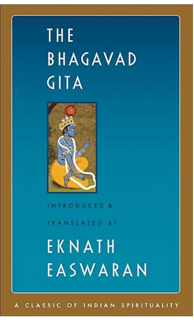The Bhagavad Gita: A Classic Guide to Enlightenment
ARTICLE
ChatGPT-3.5
4/14/20242 min read


The Bhagavad Gita, often referred to simply as The Gita, is one of the most revered texts in Hindu philosophy and spirituality. Comprising 700 verses, it is part of the Indian epic Mahabharata and is presented as a dialogue between Prince Arjuna and the god Krishna, who serves as his charioteer. The Gita is a profound philosophical and spiritual discourse that addresses the moral dilemmas faced by Arjuna on the battlefield of Kurukshetra and offers timeless teachings on duty, righteousness, devotion, and the nature of reality.
The narrative unfolds as Arjuna hesitates to engage in battle against his own relatives, teachers, and friends, fearing the consequences of bloodshed and the moral implications of violence. In his moment of doubt and confusion, Arjuna turns to Krishna for guidance, seeking clarity on his duty (dharma) as a warrior and a prince.
Krishna responds by imparting profound wisdom and spiritual truths, guiding Arjuna through his inner turmoil and illuminating the path to self-realization. He begins by emphasizing the importance of fulfilling one's duty without attachment to the fruits of action, teaching Arjuna the concept of selfless action (karma yoga). Krishna explains that while individuals have control over their actions, they have no control over the results, which are subject to the laws of karma and the divine will.
Krishna further expounds on the nature of the self (atman) and the eternal soul (jivatman), explaining that the true self is immortal and beyond birth and death. He encourages Arjuna to transcend his identification with the temporary material body and recognize the eternal essence within himself and all beings. Through the practice of meditation and self-inquiry, individuals can realize their inherent divinity and attain liberation (moksha) from the cycle of birth and death.
The Gita also explores different paths to spiritual realization, including the path of knowledge (jnana yoga), the path of devotion (bhakti yoga), and the path of selfless action (karma yoga). Krishna teaches that all these paths ultimately lead to the same goal of union with the divine, and individuals should choose the path that resonates with their temperament and inclinations.
Krishna reveals his cosmic form (Vishvarupa) to Arjuna, demonstrating the omnipresence and omnipotence of the divine. He illustrates that all forms and phenomena are manifestations of his divine power and that he is the ultimate source of creation, preservation, and destruction in the universe.
The Gita concludes with Arjuna's surrender to Krishna's teachings and his readiness to fulfill his duty as a warrior without attachment or aversion. Arjuna acknowledges Krishna as the Supreme Lord and commits himself to following his divine guidance.
The Bhagavad Gita is not only a philosophical discourse but also a practical guide to righteous living and spiritual growth. Its teachings have inspired countless individuals throughout history and continue to offer profound insights into the nature of existence and the path to self-realization. Whether one seeks guidance in times of moral dilemma or aspires for spiritual enlightenment, the timeless wisdom of The Gita remains relevant and transformative for people of all backgrounds and beliefs.
—This article was partially generated by ChatGPT (powered by OpenAI’s language model, GPT-3.5; https://openai.com). The editing was performed by Aaron Larson.
Purchase the book now on Amazon
As an Amazon Associate, I earn from qualifying purchases. This does not affect your cost. The commission comes out of Amazon's profits. Thank you for your support.


